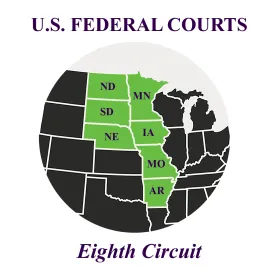In the latest tax regulation deference case, the Eighth Circuit provided guidance to taxpayers and tax practitioners on the “analytical path” to resolve the question of whether a tax regulation is a valid interpretation of the Internal Revenue Code. The court held that the regulation was invalid in part because it unreasonably added conditions to the statutory requirements for qualified educational organizations, however, it was valid as to its interpretation regarding the permissible scope of the taxpayer’s activities to fit within the applicable statute. The opinion is noteworthy for its detailed examination of statutory and legislative history, judicial interpretations and agency position during legislation in its analysis of Congress’ intent.
Deference is one topic that captivates many, and tax cases referencing Chevron, Skidmore and Auer (and more recently Kisor) always grab attention. The latest deference case in the tax area is Mayo Clinic v. United States, No. 19-3189 (8th Cir. May 13, 2021). For some background on deference, including the district court proceedings in the Mayo Clinic case, see here.
In the Mayo Clinic case, the question was whether the taxpayer was a “qualified organization” exempted from paying unrelated business income tax (UBIT) on unrelated debt-financed income under Internal Revenue Code (Code) Section 514(c)(9)(C)(i). Answering this question required determining whether the taxpayer was an “educational organization which normally maintains a regular faculty and curriculum and normally has a regularly enrolled body of pupils or students in attendance at the place where its educational activity are regularly carried on” within the meaning of Code Section 170(b)(1)(A)(ii). Relying in part on Treasury Regulation Section 1.170A-9(c)(1), the government asserted that the taxpayer was not a qualified organization because it was not an educational organization because its primary function was not the presentation of formal instruction (primary-function requirement) and its noneducational activities were not merely incidental to the educational activities (merely-incidental requirement). The district court – Mayo Clinic v. United States, 412 F.Supp.3d 1038 (D. Minn. 2019) – held in favor of the taxpayer and invalidated the regulation, holding that the primary-function requirement and the merely-incidental requirement were not intended by Congress to be included in the statute. The Eighth Circuit reversed and remanded the decision. Implementing the longstanding two-pronged deference test under Chevron U.S.A. Inc. v. NRDC, 467 U.S. 837 (1984) and acknowledging recent precedent in Kisor v. Wilkie, 139 S.Ct. 2400 (2019), the Mayo Clinic court emphasized that the question before it was whether the government “stayed within the bounds of its statutory authority.” To answer this question, the court stated that to determine whether the statute was unambiguous required examining the statutory history and applying traditional tools of statutory construction. This led the Eighth Circuit to trace the evolution of the Code over more than a century, focusing on changes to statutory language, legislative history, agency positions during the legislative process and judicial interpretations of the law.
Based on this exhaustive analysis of the evolution of the relevant law, the Eighth Circuit concluded that the requirement that an organization’s primary function must be the presentation of formal instruction was unreasonable because it departed from judicial precedent and was contrary to an agency interpretation that was previously rejected by Congress. However, the court found that the primary-function and merely-incidental requirements had a valid role in interpreting the statute. The court noted that these tests were similar to settled judicial interpretations of the statute and that Congress was aware of these interpretations throughout changes to the statute. Based on its conclusions, the Eighth Circuit remanded the case to the district court to further develop the record and apply the law in the first instance.
Practice Point: The Eighth Circuit’s approach to resolving the deference question focused heavily on an examination of the statutory history and judicial interpretations. Unlike the many cases that focus almost exclusively on the statutory language before it when deciding whether the statutory language is unambiguous, the court did not look at the words in a vacuum but found it necessary to trace the evolution of the statute from its early beginnings to the present. Taxpayers and practitioners analyzing the meaning of statutory language, both in the context of agency interpretations and as a general matter, should consider performing a similar analysis as part of their due diligence and determination of tax reporting positions.




 />i
/>i

